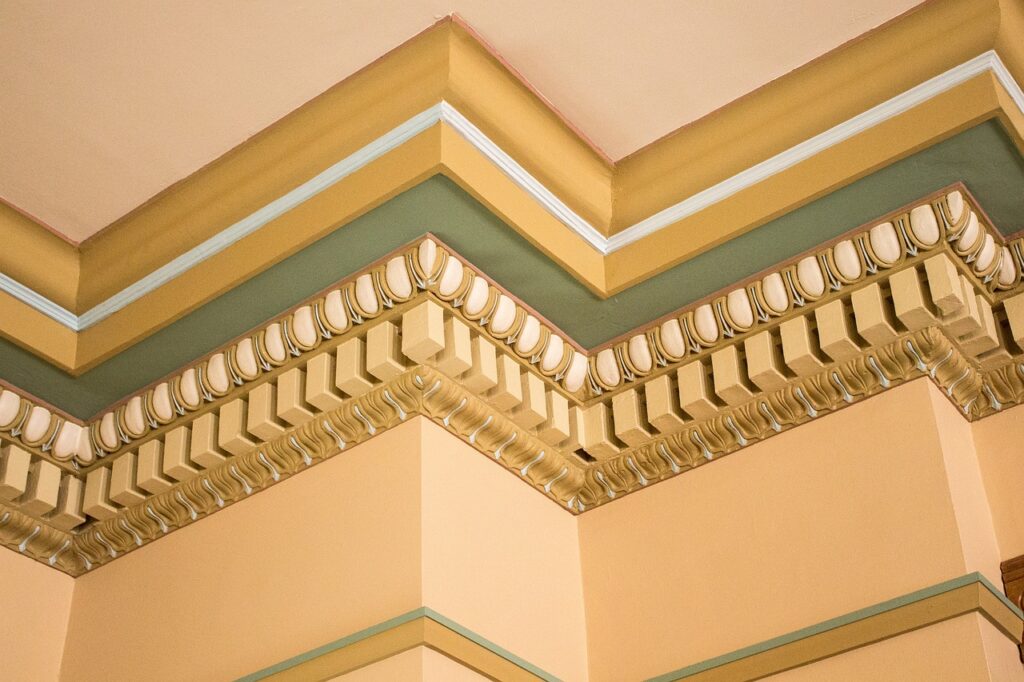Elevate Your Space: The Timeless Elegance of Crown Molding
by siteadmin

In the world of interior design, it’s often the small details that make the biggest impact. One such detail that has stood the test of time and continues to add charm and sophistication to homes is crown molding. From grand estates to cozy cottages, crown molding has been a staple architectural feature for centuries, and its timeless appeal shows no signs of fading.
A Touch of Tradition
Crown molding, also known as cornice molding, is a decorative trim installed where the walls meet the ceiling. Its primary purpose is aesthetic, serving to visually enhance the transition between the walls and ceiling while adding depth and character to a room. Originating in ancient Greece and Rome, crown molding was initially crafted from stone or marble and adorned the interiors of palaces and temples. Over time, its popularity spread, and it became a symbol of elegance and refinement in architecture.
Versatility in Design
One of the most appealing aspects of crown molding is its versatility. Available in a variety of styles, sizes, and materials, crown molding can complement virtually any interior design theme, from classical to contemporary. Traditional crown molding typically features intricate patterns and designs, such as dentil molding or egg-and-dart motifs, ideal for enhancing the elegance of formal spaces like dining rooms or living rooms. In contrast, modern crown molding tends to be simpler and sleeker, with clean lines and minimal ornamentation, perfect for adding a touch of sophistication to minimalist interiors.
Enhancing Architectural Features
Beyond its decorative function, crown molding can also serve a practical purpose by concealing imperfections in the walls or ceiling and creating a seamless transition between different architectural elements. For instance, crown molding can be used to accentuate architectural features like archways or built-in shelving, drawing attention to these focal points and adding visual interest to the space. Additionally, crown molding can be employed creatively to define separate areas within an open-concept floor plan, helping to delineate spaces while maintaining a sense of cohesion.
Installation and Maintenance
While crown molding adds undeniable charm to any home, its installation requires precision and attention to detail. Properly installing crown molding involves measuring and cutting the trim accurately, ensuring seamless joints, and securely attaching it to the walls and ceiling. While DIY installation is possible for those with carpentry skills, hiring a professional can ensure flawless results, especially for intricate designs or challenging spaces.
Once installed, crown molding requires minimal maintenance to preserve its beauty. Occasional dusting or wiping with a damp cloth is usually sufficient to keep it clean. Additionally, periodic inspection for cracks or damage is recommended to address any issues promptly and prevent further deterioration.
In a world where interior design trends come and go, crown molding remains a steadfast symbol of timeless elegance and sophistication. Whether adorning the ceilings of historic mansions or modern apartments, crown molding adds a touch of tradition and refinement to any space. Its versatility, ability to enhance architectural features, and ease of maintenance make it a popular choice among homeowners and designers alike. So, if you’re looking to elevate the aesthetic appeal of your home, consider incorporating crown molding into your design—it’s a decision you won’t regret.
In the world of interior design, it’s often the small details that make the biggest impact. One such detail that has stood the test of time and continues to add charm and sophistication to homes is crown molding. From grand estates to cozy cottages, crown molding has been a staple architectural feature for centuries, and…
Recent Posts
- Carpentry as Art: Exploring the Creative Expression of Carpenters
- Mastering the Craft: The Mastery of Materials and Tools by Carpenters
- Tracing the Craft: The Historical Evolution of Carpentry Techniques by Carpenters
- Elevating Interiors: Enhancing Spaces with Crown Molding
- Mastering Crown Molding: Practical Considerations and Installation Tips
